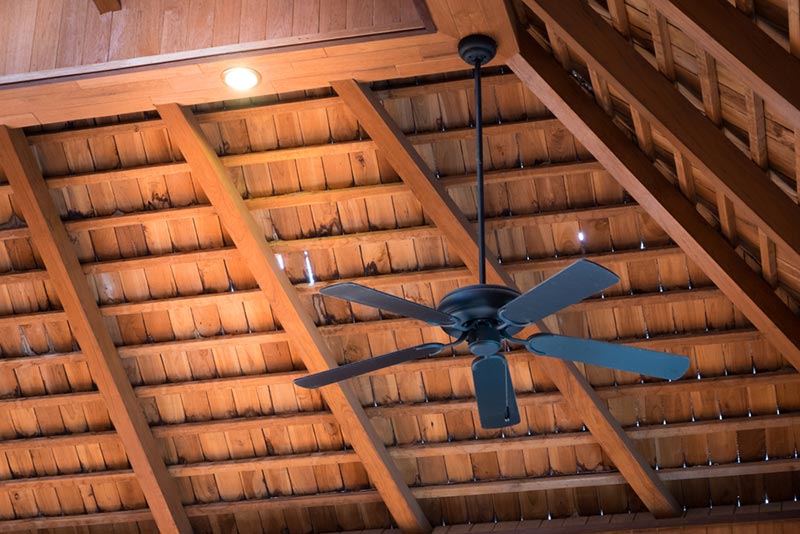How Does Daylight Savings Time Save Energy?
-
Pete Ortiz
- Last updated:

Every year, Americans must move their clocks forward for an hour during spring and turn it back to standard time in autumn. The clock is adjusted as part of Daylight savings Time (DST), aimed at providing us with an extra hour of daylight to pursue outdoor activities. When we spend more time outdoors, we use less energy in operating appliances, lighting, and entertainment activities. While this all sounds like a good idea, how much energy is changing the clock supposed to save?
The energy impacts of DST are a hotly debated topic. Several studies argue that the benefits of DST are not related to energy savings. The studies show that DST has minimal reductions in energy consumption. In fact, they claim there is about a 1%–4% rise in energy consumption as a result of DST. Other studies show that DST saves about 0.5% of the electricity used in a day.
In this article, we will look at a brief history of energy conservation and highlight what different research studies say about DST on energy saving. We will also give you tips on how to save energy in your home. Read on to learn more.
A Brief History of Energy Conservation
Over the years, the different variations of daylight-saving time have had one basic concept: adjusting your clock to match your daylight hours can significantly improve your efficiency. This includes the reduction in the consumption of electricity, candles, and coal. It also applies to extending the time spent on leisure activities. While this might have worked before, would it still save energy in our technologically advanced age?
Unfortunately, this is still unclear. Theoretically speaking, adjusting the clock to DST should help reduce the number of hours people sleep, hence increasing daylight hours in the evening. This will prevent people from using electricity for lighting or evening leisure activities.
However, in today’s world, lighting is not the only source of energy conservation headaches we experience. If you walk into any modern electrical hardware store, you will find an array of different high-efficiency LED bulbs, timers, and automatic sensors. All these modern gizmos are designed to limit the energy used by lighting.
Unfortunately, the potential energy savings from adjusting DST are not enough to balance other energy usage at home. This is mostly witnessed in our evening pastime activities that are now technology-based and heavily reliant on electricity. These leisure activities include binge-watching your favorite show on Netflix or playing on a PlayStation Console.
Furthermore, besides having to use more electricity in the morning to combat jet lag, DST also increases energy consumption. This is a result of the installation of air conditioners that must run at full capacity during those extra evening hours of sunlight due to DST.

What Research Says About Daylight Saving Time
Even though DST has been used for energy conservation for several decades now, its efficacy has somewhat been difficult to prove. Early researchers focused their studies on lighting and found that you could save energy by adjusting the clock to DST.
However, as years passed on, studies on the effectiveness of DST changed to include broader energy use patterns and found mixed results. Here are some of the major research studies done to determine the impact of DST on energy savings and their findings.
- The first and most comprehensive study on the effectiveness of DST was conducted in the 1970s by the U.S. Department of Transportation. In their studies, they found out that DST was able to save at least 1% of the total national electricity usage.
- Researchers Kellogg and Wolff also carried out their research to determine if the changes in DST rules had any effect on energy savings. These two researchers based their work in Australia as the country prepared for the 2000 Summer Olympic Games. According to their report, DST might reduce the electricity used in the evenings, but it increases electricity consumption in the morning. So, no significant energy savings are realized.
- In 2006, the state of Indiana conducted state-wide research on DST focusing on electric bills and electricity consumption. Some papers published in economic journals suggest that DST can lead to at least a 1% increase in energy consumed in residential buildings. Overall, consumers can spend an extra $9 million on electricity bills. In 2011, researchers Kotchen and Grant also analyzed data from the Indiana research and came to the same conclusion.
- In 2007, the US congress passed a policy that extended the DST period by four extra weeks. However, different reports after the extension period show mixed reactions. A report by the US Department of Energy found that energy usage dropped by about 0.2% (small enough to be within the margin of error). A year later energy department experts realized the extension helped save about 0.5% of national energy used per day usually, during a 3–5 hour period in the evening. This can roughly be translated to 1.3 trillion-watt hours in total, which is equivalent to the amount of electricity used in over 100,000 homes in a year.
- On the other hand, a California Energy Commission Study found that extending the DST period by four weeks had no significant impact on energy savings. These sentiments are echoed by a study published in the Journal of Economic Behavior and Organization in 2014. They confirmed that DST barely conserves energy but may even increase the overall energy usage in a household.
- Another report submitted by the National Bureau of Economic Research indicates that while DST may reduce the energy used in lighting, the amount of energy saved is offset by an increase in heating and cooling needs. Similar results were observed in a European study which showed that energy used in lighting reduced while the demand for heating increased by 9%.
What We Can Learn From DST Research Studies
As you may have gathered, no solid evidence supports DST as an efficient energy-saving practice. This can be attributed to the fact that the study methods used for the research, and lifestyles have been changing since the DST concept was introduced. Unlike back in 1966 when DST was standardized, lighting today is much more efficient and the energy use patterns are more complicated.
Lighting is not the only way that we use electricity. Other uses depend entirely upon how people choose to spend that extra daylight hour in the evening. Furthermore, the growing and widespread use of technological devices is perhaps reducing the energy-saving impact of adjusting the clocks to DST.
There has even been a debate where some people propose to end Daylight Saving Time while others suggest DST be extended all year round. However, more research should be done to weigh the costs and benefits of implementing DST, especially in our technologically advanced era. Future research should also compare DST with other energy-saving methods to determine which of them is most efficient.

Tips on How to Save Energy in Your Home
Though experts are still debating on the efficiency of adjusting the clock to DST, you can always get some energy savings on your own. Here are a few tips to help you reduce energy consumption in your household in spring:
1. Clean Your Air Conditioning/HVAC Filters in Spring
In winter, most unused AC units tend to gather dust and debris which can reduce the efficiency of the components. So, in spring, you should clear any debris and leaves from your unit. Also, ensure that the vents and grills are unobstructed and the unit’s air filter is not overworked to reduce the overall amount spent on electricity consumption.

2. Purchase Energy-Saving Household Products
If you want to upgrade some appliances in your home in spring, don’t just go for the best offer on the shelves. Instead, look for energy-efficient products, which usually have an EPA WaterSense label. These products will help you reduce the amount spent on electricity bills.
A good example of a company producing energy-efficient products is ENERGY STAR, which helped US citizens save about $30 billion in energy consumption.
3. Replace Old Light Bulbs With Modern LEDs

You can significantly increase the lifespan of your lightbulbs by purchasing energy-efficient CFL and LED bulbs. These lighting bulbs use about 75–80% less energy when compared to incandescent bulbs. Furthermore, LED light bulbs last about 25 times longer than traditional bulbs. This will in turn save you energy and money in the long run.
4. Ensure Your Smart Thermostat Is Adjusted for Spring
As you gradually move from the cold winter days to spring, your daily schedules are likely to change. This means that you will likely spend more time outdoors than indoors. As such, you need to adjust your thermostat to accommodate the changes.
You can save a lot of money by changing the temperature of your house a few degrees when sleeping and while away. Since it’s hard to do this daily, you can program a smart thermostat to automatically adjust itself. This way, you can save more energy and reduce electricity bills.
5. Instead of Using the AC, Use Shades to Reduce the Heat in Your Home by Blocking Direct Sunlight

While the sun is a great source of heat in our homes during the cold winter months, when outside temperatures rise, the heat can quickly become unbearable. So, next time you are away from home, close your blinds and shade to block direct sunlight from heating your house. This way, you will not have to power on the AC to freshen up and reduce heat in your living space.
6. Use a Dishwasher Instead of Handwashing
Did you know that hand washing dishes consumes more water than using a dishwasher? Indeed, it does, and in fact, handwashing uses 27 gallons of water instead of the 3 gallons used by a dishwasher. Annually, washing dishes by hand can use up to 5,000 more gallons of water when compared to using an energy-saving dishwashing machine.
7. Adjust Ceiling Fan to Run Counterclockwise in Spring

Usually, ceiling fans suck heat from a room and direct it to the ceiling when running counterclockwise. This cools the room, making it more comfortable. In winter, most people run their ceiling clockwise to draw warm heat from the ceiling to warm up the room. However, you should adjust the settings to run your fan counterclockwise in spring to make the room several degrees cooler, especially when using a fan together with an air conditioner.
Final Thoughts
As you might have gathered, the consensus is that the energy impacts of DST are not significant. Granted, you might enjoy more outdoor activities from DST, but it doesn’t really save energy. DST only saves energy for lighting purposes as people wait for an extra hour before turning on the lights.
When this concept was introduced, the era was technologically different from that of today. Since then, household features have evolved, changing energy requirements. Now, lighting is not the only use of energy at home. Depending on the climate and the state, most people use more energy for evening leisure activities, heating, and air conditioning.
So, adjusting DST will have minimal or no impact on energy savings. Hence, more research needs to be done to determine the efficiency of DST, factoring in the latest advancements in technology and lifestyle change.
- The first comprehensive study on the impact of DST in the 1970s
- Indiana statewide research on the impacts of DST on electricity consumption in 2006
- How does DST save energy?
- How the types of bulbs you use on lighting can save you money and energy.
- How to save energy in your home by using dishwashers instead of handwashing
- Kellogg R, Wolff H (2008) Daylight time and energy: evidence from an Australian experiment
Featured Image Credit: Zephyr_p, Shutterstock
Contents



